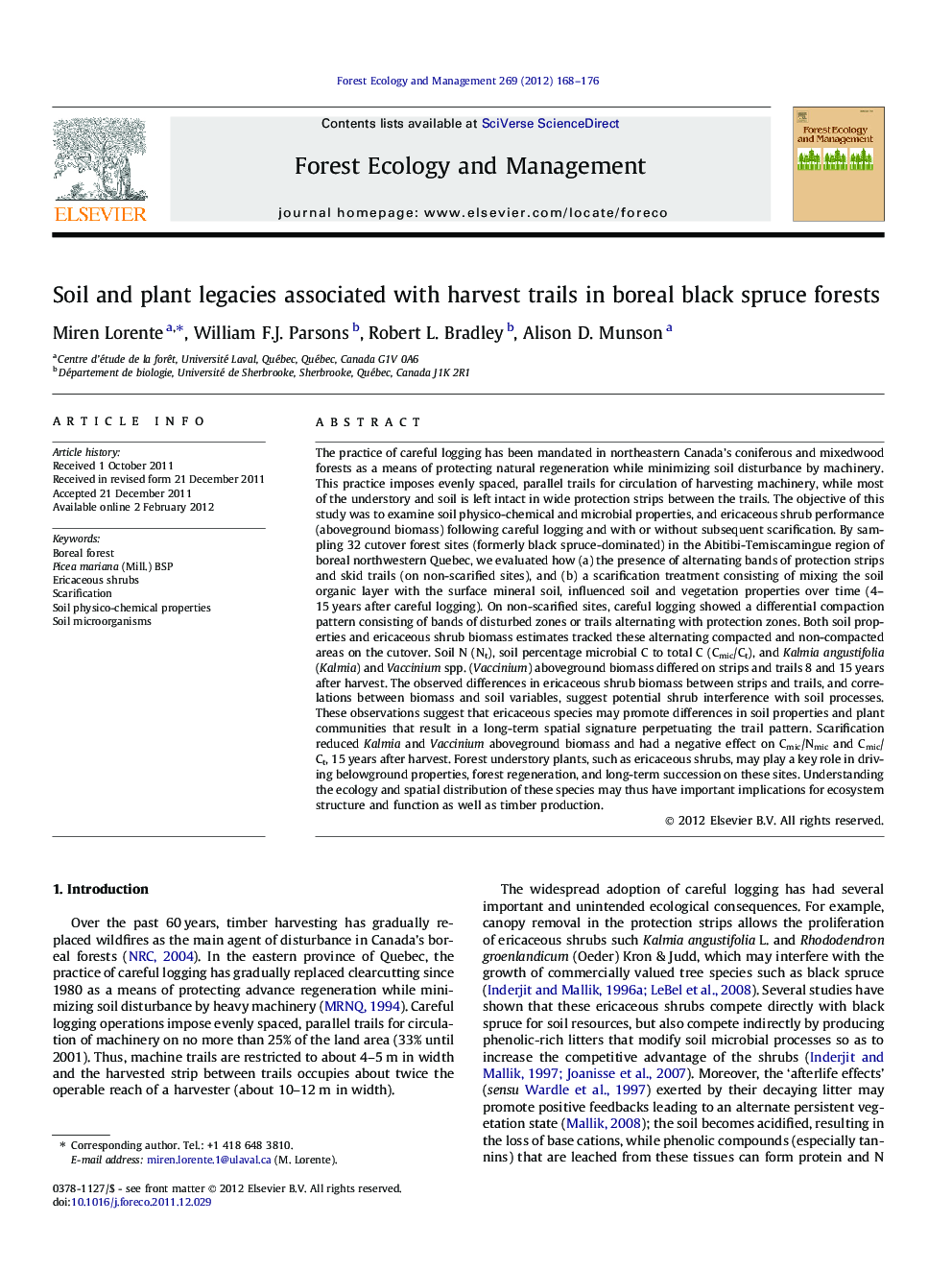| Article ID | Journal | Published Year | Pages | File Type |
|---|---|---|---|---|
| 87453 | Forest Ecology and Management | 2012 | 9 Pages |
The practice of careful logging has been mandated in northeastern Canada’s coniferous and mixedwood forests as a means of protecting natural regeneration while minimizing soil disturbance by machinery. This practice imposes evenly spaced, parallel trails for circulation of harvesting machinery, while most of the understory and soil is left intact in wide protection strips between the trails. The objective of this study was to examine soil physico-chemical and microbial properties, and ericaceous shrub performance (aboveground biomass) following careful logging and with or without subsequent scarification. By sampling 32 cutover forest sites (formerly black spruce-dominated) in the Abitibi-Temiscamingue region of boreal northwestern Quebec, we evaluated how (a) the presence of alternating bands of protection strips and skid trails (on non-scarified sites), and (b) a scarification treatment consisting of mixing the soil organic layer with the surface mineral soil, influenced soil and vegetation properties over time (4–15 years after careful logging). On non-scarified sites, careful logging showed a differential compaction pattern consisting of bands of disturbed zones or trails alternating with protection zones. Both soil properties and ericaceous shrub biomass estimates tracked these alternating compacted and non-compacted areas on the cutover. Soil N (Nt), soil percentage microbial C to total C (Cmic/Ct), and Kalmia angustifolia (Kalmia) and Vaccinium spp. (Vaccinium) aboveground biomass differed on strips and trails 8 and 15 years after harvest. The observed differences in ericaceous shrub biomass between strips and trails, and correlations between biomass and soil variables, suggest potential shrub interference with soil processes. These observations suggest that ericaceous species may promote differences in soil properties and plant communities that result in a long-term spatial signature perpetuating the trail pattern. Scarification reduced Kalmia and Vaccinium aboveground biomass and had a negative effect on Cmic/Nmic and Cmic/Ct, 15 years after harvest. Forest understory plants, such as ericaceous shrubs, may play a key role in driving belowground properties, forest regeneration, and long-term succession on these sites. Understanding the ecology and spatial distribution of these species may thus have important implications for ecosystem structure and function as well as timber production.
► We examine soil and ericad properties 15 years after careful logging and scarification. ► These properties differed on trails and protection strips after careful logging. ► Ericad-induced changes in soil properties contributed to perpetuate the trail pattern. ► Scarification had a positive effect on ericad reduction but altered C and N availability.
